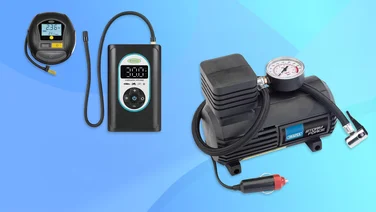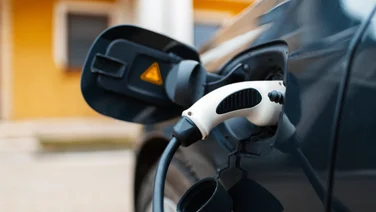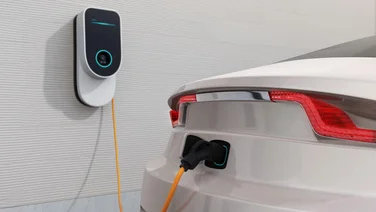To help us provide you with free impartial advice, we may earn a commission if you buy through links on our site. Learn more

Are you thinking about ditching the internal combustion engine? Or have you recently already made the switch to an EV? Either way, we explain the most convenient ways to charge your electric vehicle at home.
The take up of electric vehicles (more commonly known as EVs) has exploded in recent years, with the Society of Motor Manufacturers and Traders (SMMT) claiming that there are now 840,000 fully electric cars on UK roads.
Rewind to 2016, and that figure barely topped 30,000, with the market growing by a massive 40% from 2021 to 2022 alone.
The British government has announced that it will ban the sale of new, pure internal combustion engine vehicles by 2030, so those figures will only continue to increase at a similarly frantic pace in the coming years. That said, potential customers and those just intrigued by the new electric craze still have lots of questions. Not least the sticky subject of exactly where to charge an EV.
We all know that the public charging network such as those large charging units at service stations, gyms, hotels, outside McDonalds and even your workplace is growing, too, with more sites seemingly springing up every week. But often, driving to a public station and waiting for a vehicle to charge is inconvenient. By far one of the best, and often the most economical, way of charging your electric vehicle is at home. But what are your options?
If you would like to find out the cost of installing an EV charging point at your home directly from suppliers near you, the try our free price comparison tool – or for more information, read on.
Get a free quote for a home EV charger today
Find out how much a home EV charging point would cost you by taking our quick survey below.
Charge from a three-pin plug
Despite what some naysayers claim, its perfectly possible to charge something as sizeable as an electric vehicle from the standard three-pin plug socket youll find in any domestic home. Many EV manufacturers will include a charger with the vehicle for this exact scenario although it will generally be advised to use this solely for emergency top-ups.
Thats because a domestic wall socket delivers just 2.4kW of power, meaning it can take 24 hours or more to charge even a small-capacity electric vehicle, such as a Nissan Leaf. You can see how long the various EV charging methods take in our EV charging guide.
On top of being the slowest way to fully charge an electric vehicle, there are also a few other downsides to using this method. Its often messy, requiring extension cables to run from your house or flat to your car, which can inconvenience others. Using extension cables wont be safety rated, especially when drawing maximum consumption from the socket for extended periods of time, potentially leading to overheating and, in the very worst case, fires.
However, above all else charging an average-sized battery in this way is expensive, as youll be drawing electricity during peak times. Generally, the most cost-effective way to charge an electric car at home is overnight using a multi-rate tariff that offers a lower rate during overnight off-peak hours.
This wont be possible from a wall socket, since full charging times take that much longer.
READ NEXT: How to install an EV charger at home
Install a wallbox
A wallbox or home charge point is the most common way EV owners choose to charge their vehicles. These are essentially standalone charging units that are either free-standing or can be hung on a wall. Installation can cost anywhere between £600 and £1,000, although there are now grants available to those who live in privately owned flats and/or rented accommodation to help ease the financial burden. For more information, read our guide on the costs of installing an EV charging point.
Wallboxes prove popular for a number of reasons. First, because they tend to be far more practical and much safer than dangling extension cables from your home. A free-standing or wall-mounted charging unit can usually be installed close to where you typically park your EV, whether thats inside a garage or on a driveway, which limits trailing wires.
More importantly, these units can tap directly into your homes domestic power supply, so it can deliver a much more potent hit of electricity. Typically, this is around 7.4kW, making this method more than twice as fast as a domestic three-pin socket, cutting charge times in half or more.
However, in some cases, its possible to completely upgrade your meter to a 3-phase electricity supply, thereby enabling some chargers to deliver power up to 22kW. However, note that according to UK Power Networks, this can cost anywhere from £1,700 to over £6,000 depending on several factors including ease of access to your house, the cost of the engineers and hardware.
If you want more information on how to install an EV charger at home, you can read our extensive EV installation guide, which takes you through the best place to install one, the different types of charger and how much it costs.
Plug into a lamppost or bollard
With a staggering 84% of the UK population living in cities or densely populated areas, it comes as no surprise that plenty of us dont have the luxury of a driveway, a garage or even off-street parking.
Thankfully, a number of electricity suppliers have cottoned on to this and have started to install charging points in lampposts and kerbside bollards. These allow EV owners to charge their vehicles while theyre parked on the street in front of their house or flat, without any trailing wires and extension cables poking out of a window.
Companies such as Ubitricity, a subsidiary of Shell, have installed more than 7,000 charge points in London alone. You can find them using the Shell Recharge app, or popular digital services such as Zap-Map, PlugShare and WattsUp, where they will typically offer 5kW of power a halfway house between domestic charging and a 7kW wall unit.
Where Ubitricity is concerned, you can even request a public EV charge point to be installed near your home or place of work by answering a few questions online.
READ NEXT: Best multimeter
Put pressure on your landlord
As weve previously mentioned, there are grants available to help ease the financial pressure of installing wall-mounted charging points.
The Electric Vehicle Homecharge Scheme, which used to help private homeowners with the cost of installation, was replaced in 2022 with the EV Chargepoint Grant.
This is geared towards owners of flats and landlords with tenants, allowing the latter to get either £350 or 75% whichever is lower off the cost of purchase and installing a socket.
In addition, in each financial year, landlords can get up to 200 grants for residential properties and 100 grants for commercial properties.
So, if you live in a rental property and want a convenient way to charge your EV, put pressure on your landlord to take advantage of the grants while theyre still active.
There are also similar grants available for residential car parks and owners of small to medium-sized businesses that, although not as simple as having a point installed in a home that you own, at least offers more potential options.






